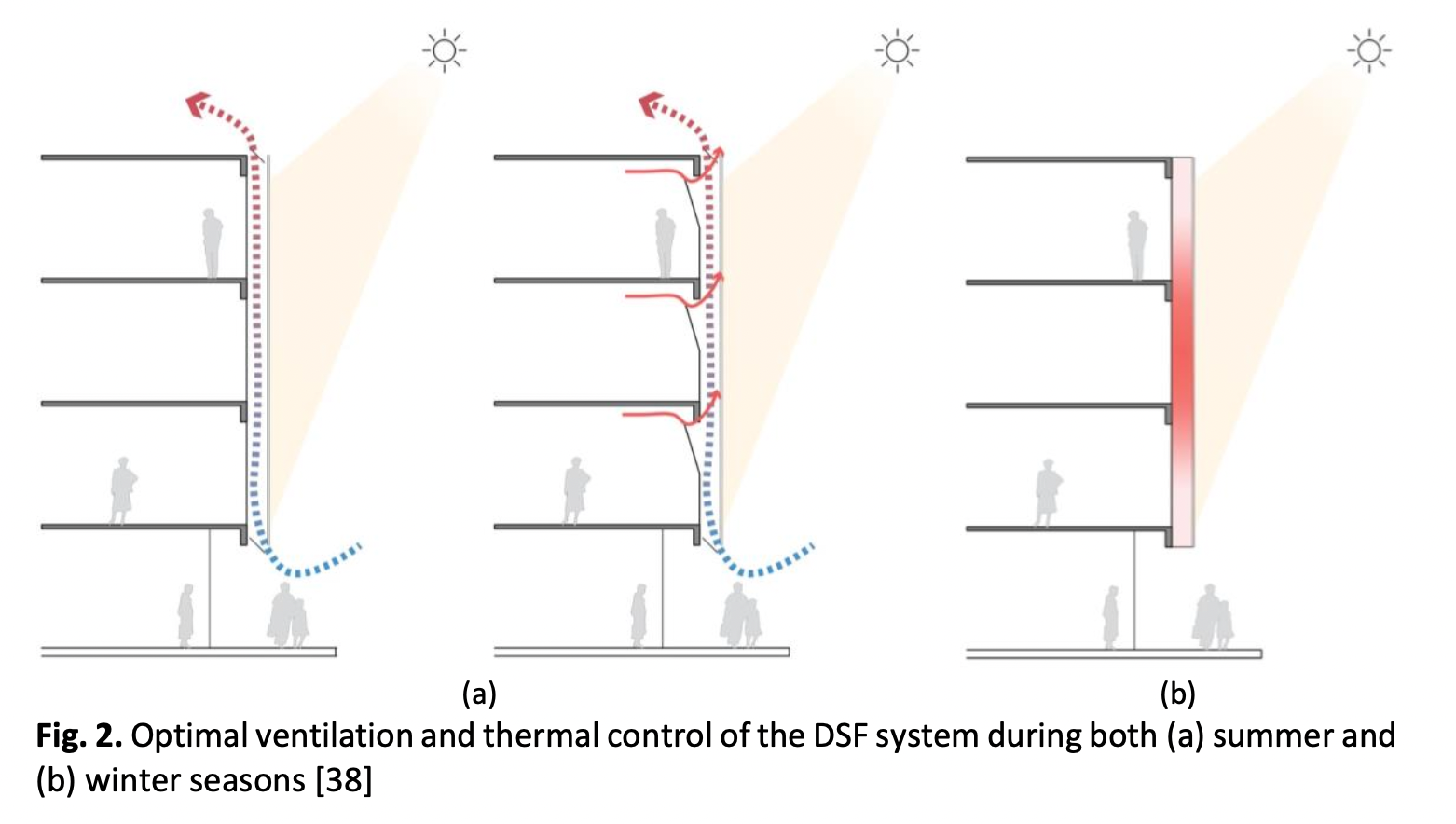Thermal and Energy Influences of Double Skin Façade towards Green Buildings in Tropical Classified Countries
DOI:
https://doi.org/10.37934/arfmts.109.2.126Keywords:
Double Skin Façade, Energy Efficiency, Built Environment, Simulation, Green Building, Tropical ClimateAbstract
Double skin façade (DSF) has emerged as a decisive strategy for improving building thermal performance and energy efficiency. In various climatic conditions, DSF will perform differently and accordingly. However, the whole building performance of the DSF has never been studied in a broad climatic condition. As a result, there will be a high risk that the system will underperform conventional façade. This study adopted a quantitative approach with computational simulation software, EnergyPlus, to analyze the thermal behavior and energy efficiency of both single skin façade (SSF) and DSF systems. The investigation focused on an overall Köppen classified tropical climate category, which encompasses tropical rainforest (Af), tropical monsoon (Am), tropical savanna with dry winter (Aw), and tropical savanna with dry summer (As) climates. The primary finding indicates that the SSF in various tropical-classified groups exhibits diverse thermal behaviors throughout the year, from month to month and from orientation to orientation. The climate of each tropical classification distinctly influences the performance of both façades. The air temperature and relative humidity in both SSF and DSF office zones remained within a predictable range throughout the year. Thermal behavior and energy consumption fluctuated considerably on a monthly basis but only marginally on an annual basis. This similarity explains how buildings in the four cities consumed distinctly comparable cooling energy consumptions. The study also indicates that, even without a shading device, the DSF could still outperform the conventional facades. In all climatic contexts, energy consumption for cooling could be diminished by more than 40%, and the air temperature in the office zones was decreased to around 4°C while relative humidity was increased by 1% to 5%. Hence, an appropriate DSF design could be employed on office buildings in the overall classified tropical climates to attain energy efficiency through thermal enhancement from the façade’s second layers.
Downloads

































